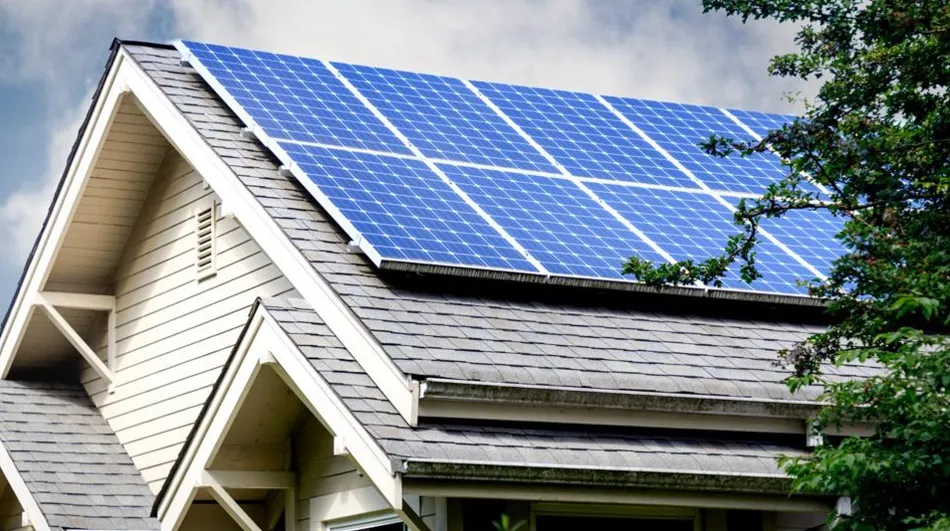
DIY Solar Panel Installation: Pros, Cons, and Essential Tips
February 19, 2024With the increasing popularity of solar energy and the desire for renewable power sources, many homeowners are considering DIY solar panel installation as a way to save money and reduce their environmental impact. While installing solar panels yourself can be a rewarding and cost-effective endeavor, it also comes with its own set of challenges and considerations. In this article, we'll explore the pros and cons of DIY solar panel installation and provide essential tips to help you navigate the process successfully.
Pros of DIY Solar Panel Installation
- Cost Savings: One of the primary advantages of DIY solar panel installation is the potential for significant cost savings. By eliminating labor costs associated with professional installation, you can reduce the overall expense of installing a solar energy system and increase your return on investment.
- Learning Experience: DIY solar panel installation offers a valuable learning experience for homeowners interested in renewable energy and sustainable living. By taking on the project yourself, you can gain valuable knowledge and skills related to solar technology, electrical work, and home improvement.
- Customization: DIY installation allows you to customize your solar energy system to meet your specific needs and preferences. You have the freedom to choose the type and size of solar panels, inverters, and mounting systems that best suit your home and energy goals.
- Sense of Accomplishment: Completing a DIY solar panel installation can be incredibly rewarding and instill a sense of pride and accomplishment in homeowners. Knowing that you've contributed to reducing your carbon footprint and generating clean, renewable energy can be immensely satisfying.
Cons of DIY Solar Panel Installation
- Complexity: Solar panel installation is a complex and technical process that requires a thorough understanding of electrical systems, building codes, and safety regulations. Without the necessary knowledge and expertise, DIY installation can be challenging and potentially hazardous.
- Safety Risks: Working with electricity and climbing on roofs poses inherent safety risks, especially for inexperienced individuals. Accidents and injuries can occur if proper safety precautions are not followed, making DIY solar panel installation a risky endeavor for some homeowners.
- Quality Concerns: Improper installation can compromise the performance and longevity of your solar energy system. Without professional oversight, DIY installations may not meet industry standards or building codes, leading to subpar results and potential issues down the line.
- Warranty and Insurance: DIY solar panel installation may void manufacturer warranties and insurance coverage, leaving homeowners financially vulnerable in the event of equipment failure or damage. Professional installations typically come with warranties and insurance coverage to protect against unforeseen issues.
Essential Tips for DIY Solar Panel Installation
- Educate Yourself: Before embarking on a DIY solar panel installation, educate yourself about solar technology, electrical systems, and building codes. Take advantage of online resources, books, and tutorials to familiarize yourself with the process and requirements.
- Conduct a Site Assessment: Assess your property to determine the feasibility of solar panel installation. Consider factors such as sunlight availability, roof orientation, shading, and structural integrity to ensure that your home is suitable for solar panels.
- Obtain Necessary Permits: Obtain the required permits and approvals from your local building department or municipality before starting the installation process. Failure to obtain permits could result in fines or penalties and may void your homeowner's insurance.
- Invest in Quality Materials: Purchase high-quality solar panels, inverters, mounting hardware, and electrical components to ensure the reliability and performance of your solar energy system. While quality materials may come with a higher upfront cost, they can offer greater efficiency and durability over time.
- Follow Safety Protocols: Prioritize safety throughout the installation process by wearing appropriate safety gear, using proper tools and equipment, and following established safety protocols. Never attempt to work on electrical systems or climb on roofs alone, and always exercise caution when working at heights.
- Seek Professional Assistance When Needed: Don't hesitate to seek professional assistance for tasks that are beyond your skill level or expertise. Hiring a licensed electrician or solar installer to handle certain aspects of the installation can ensure compliance with building codes and safety standards.
- Test and Inspect: Test the functionality of your solar energy system and conduct a thorough inspection before commissioning it for use. Check for proper wiring, connections, and grounding, and verify that all components are installed correctly and functioning as intended.
- Monitor and Maintain: Once your solar panel system is up and running, monitor its performance regularly and perform routine maintenance to ensure optimal operation. Clean the panels periodically, check for debris or obstructions, and address any issues promptly to maximize energy production and longevity.
Conclusion
DIY solar panel installation offers homeowners the opportunity to harness the power of the sun and reduce their reliance on traditional energy sources. While it can be a cost-effective and rewarding endeavor, DIY installation also comes with risks and challenges that must be carefully considered. By educating yourself, following safety protocols, investing in quality materials, and seeking professional assistance when needed, you can successfully install a solar energy system and enjoy the many benefits of clean, renewable energy for years to come.
- No Comments!